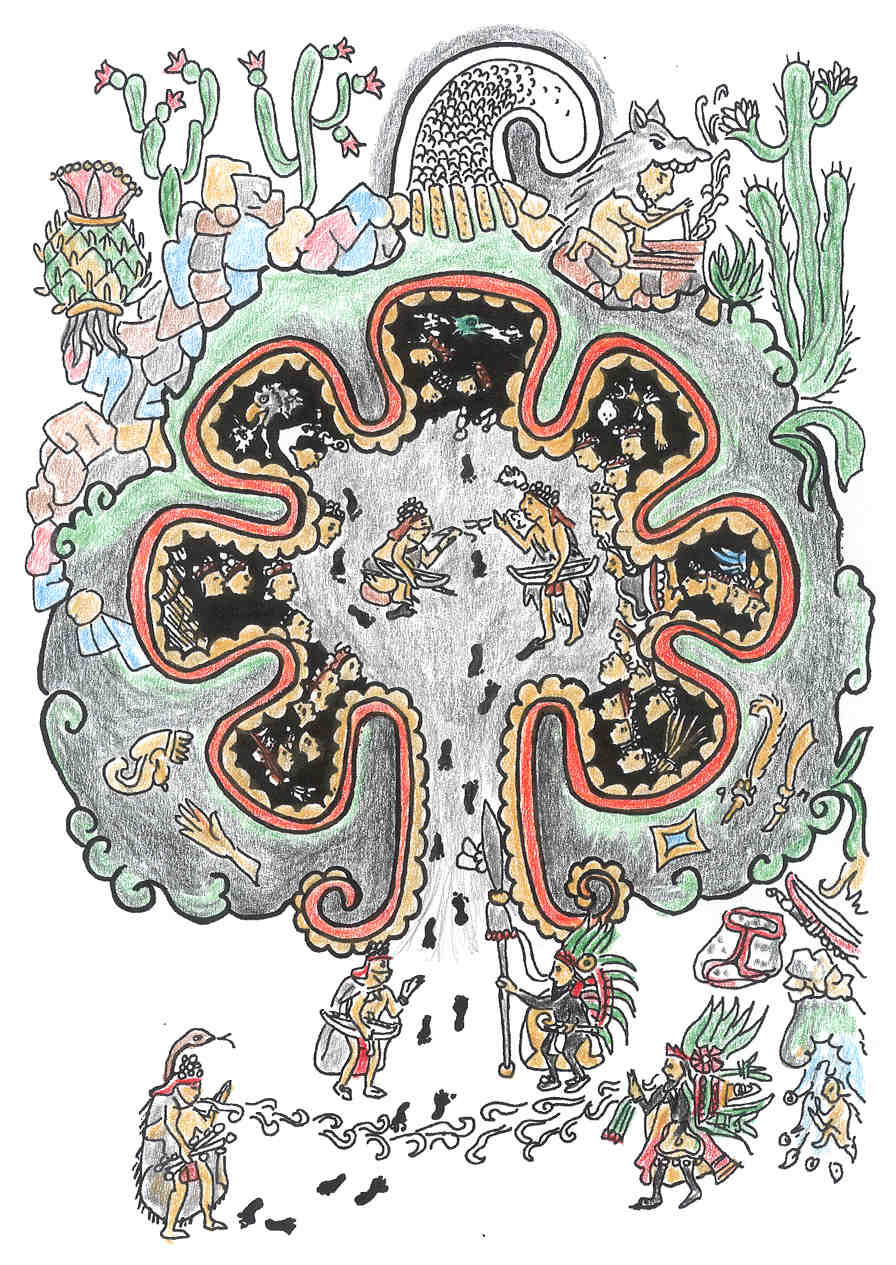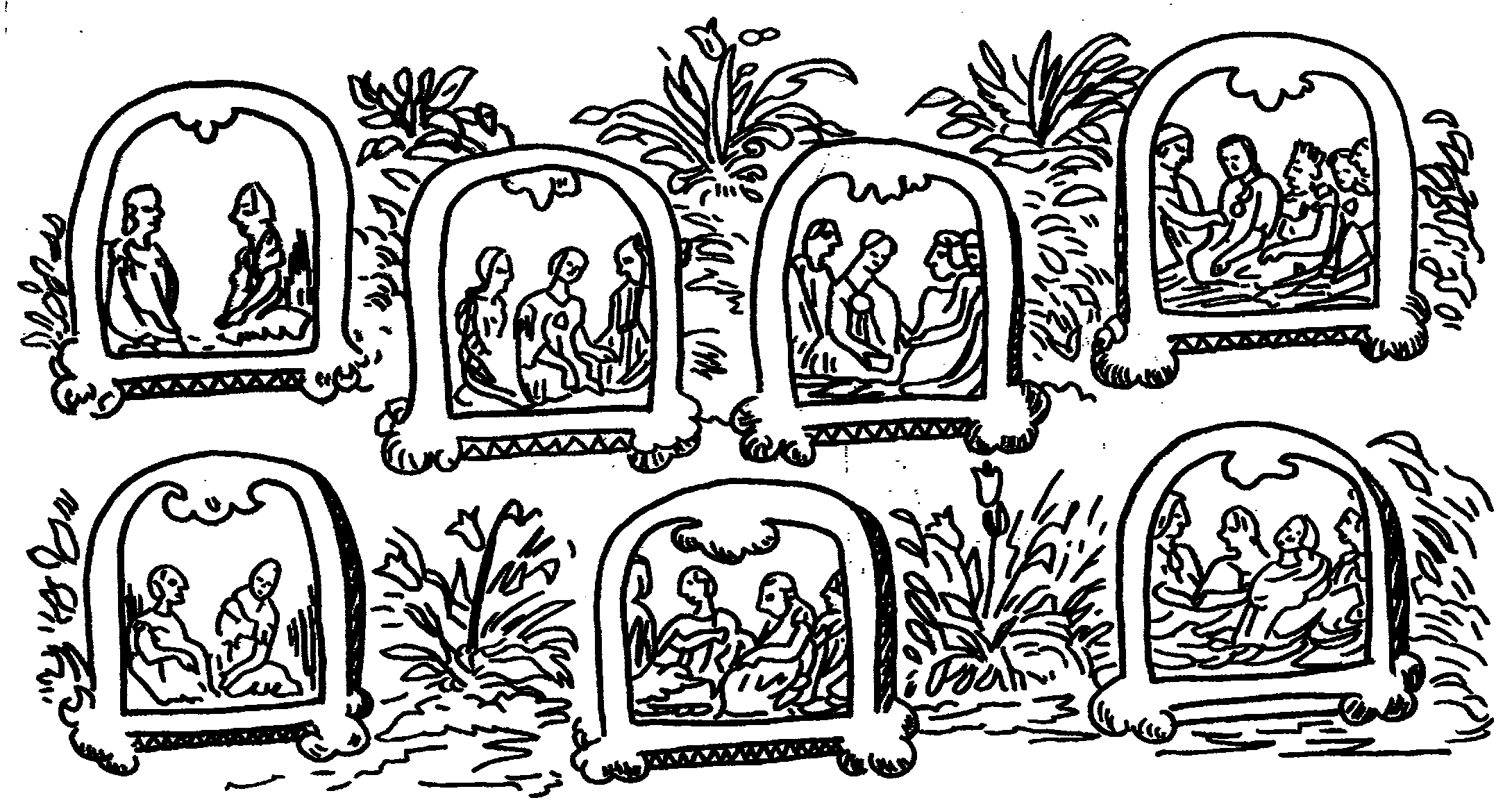The Seven Primordial Tribes of Mesoamerica
The Seven Primordial Tribes of Mesoamerica
by Diane E Wirth, MA
Materials, concepts, maps or conclusions presented at our forums or appearing on this website or emailed to BMAF members and guests is the sole responsibility of the contribiuting author(s) and does not necessarily imply that members of the Board of Directors or members of BMAF agree with all or any part of the subject matter and is not sponsored in any way by the Church of Jesus Christ of Latter-day Saints
Seven tribes are described in the Book of Mormon as having evolved from the families who came from the land of Jerusalem to the New World. The first mention of these lineage groups is circa 544 B.C., when the individual tribes were designated as Nephites, Jacobites, Josephites, Zoramites, Lamanites, Lemuelites, and Ishmaelites (Jacob 1:13). Almost 700 years later, these patriarchal tribal divisions were mentioned again, indicating the enduring nature of this tradition (4 Nephi 38). Over time, the order of the names remained the same; the last reference appears in Mormon 1:8, shortly before the demise of the Nephite nation as a result of war. From these scriptures we know that the seven families were remembered over a span of 866 years in the Book of Mormon. The importance of these lineages cannot be diminished as they are even mentioned in Doctrine and Covenants 3:17-18.
Before and after the end of the Nephite nation in A.D. 385, genealogy continued to be extremely important to Mesoamerican cultures. Early traditions, passed orally from one generation to the next, spoke of seven primordial tribes who were their ancestors. These Mesoamerican legends are recorded in murals, on stelae, on monuments, and in codices, and were fortuitously recited to Spanish clergy who made a written record of the various accounts.
Bernardo de Sahagun learned that the natives equated the cave symbolism of the seven tribes with that of boats, and suggested that these tribes crossed the waters in search of a terrestrial paradise. He wrote:
|
Concerning the origin of these peoples, the report that old men [of central Mexico] give is that they came by sea . . . in some wooden boats. . . . But it is conjectured by a report found among all these natives that they came from seven caves, and that these seven caves are the seven ships or galleys in which the first settlers of this land came.. . [Bernardino de Sahagun, Historia General de las Cosas de Nueva Espana, Introduccion al Primer Libro, Mexico, 1946), cited in Archaeology and the Book of Mormon, by Milton R. Hunter (Salt Lake City: Deseret Book Company, 1972), 44]. |
Are the Hopi related to the Maya? According to Frank Waters, the “Hopis first lived in seven puesivi, or caves”. From there they migrated northward, establishing their people and villages in accordance with the names of the "caves or womb-caverns" [Frank Waters, Mexico Mystique (Chicago: Swallow Press, 1975), 168-170]. These events may refer to the Late Classic Period in Mesoamerica when many people were on the move, as war, disease, and famine plagued much of Mesoamerica. But by the same token, the myth may be coupled with earlier times, with events going back to myths of early arrivals in the New World from across the sea.
Izapa, Chiapas, Mexico, has many beautiful and interesting stelae. Stela 67 appears to portray a bearded man in a boat, riding an inverted ocean wave. The upside down wave gives the understanding of the watery Underworld where the dead enter and rebirth takes place.
According to Garth Norman, author of Izapa Sculpture, Stela 67 may allude to a migration of people from a land beyond the sea. He suggests that the traditions of the Quiche Maya traveling in darkness may refer to the voyage through the watery Underworld on their way to this land [V. Garth Norman, Izapa Sculpture, Part 2 (Provo: New World Archaeological Foundation, Brigham Young University, 1976), 154-158]. It would not be far-fetched to compare the vast sea on which a boat travels, to the Underworld; and the boat, to the portal from which one leaves that foreboding realm to come into the light of the present world. Debarkation onto unfamiliar soil may be perceived as birth into a new world/new age, and thus fall under the category of a creation myth, the beginning of lineages, the emergence of primordial man, and so on.
The numeral classifier for caves in Yucatec is ak, which forms part of the word aktun "cave." The classifier ak is also used for words such as canoes, boats, houses, and containers [Andrea J. Stone, Images from the Underworld: Naj Tunich and the Tradition of Maya Cave Painting (Austin: University of Texas Press, 1995), 35]. All these words are associated with things that hold people and objects in safe enclosures. Stelae 3 and 6 at Izapa give representations of boats illustrated as U shaped elements. In each case the boat is in the air, possibly signifying the vehicle that transports the Mesoamerican deceased to the heavens. This is similar to the solar bark in Egyptian mythology, which travels down the river in the sky, the Milky Way. In any case, the boat is in the U-shaped symbol of the womb [see Chapter VIII of Parallels: Mesoamerican and Ancient Middle Eastern Traditions, by Diane E. Wirth (St. George, UT: Stonecliff Publishing, 2003)].
Although the legend of the seven caves comes primarily from Mexican Nahuatl speaking peoples, there was a widespread adoption of this myth among other peoples, as is evidenced by the Quiche Maya. Tulan Zuyua, or vukub pek, vukub zivan "seven caves, seven canyons," is referred to in The Popol Vuh. [Denis Tedlock, Popol Vuh: The Definitive Edition of the Mayan Book of the Dawn of Life and the Glories of Gods and Kings (New York: Simon and Schuster, 1985), 360].
The High Priest's Grave at Chichen Itza in the Yucatan also supports a belief in this origin myth in an area of non-Nahuatl speaking peoples. Similar to the Quiche place of origin, the original name for Chichen Itza may have been Ucil-Abnal, "Seven Bush Places or Hollows" [Ralph L. Roys, “Native Empires in Yucatan,” in Revista Mexicana de Estudios Antropologicos 20: 153-177].
The Annals of the Cakchiquels, a Maya history, refers again and again to the seven primordial tribes as the original colonizers who came from across the sea [The Annals of the Cakchiquels, translated from the Cakchiquel Maya by Adrian Recinos and Delia Goetz (Norman: University of Oklahoma, 1953), 59, n.59].
Does this account of the seven tribes, as well as the others mentioned here, refer to the same long-held concept of seven lineages in the Book of Mormon? We can only speculate that this is the case. What we do know is that after Book of Mormon times, this legend was part of oral tradition among the natives of Mesoamerica for many, many years.
Does this account of the seven tribes, as well as the others mentioned here, refer to the same long-held concept of seven lineages in the Book of Mormon? We can only speculate that this is the case. What we do know is that after Book of Mormon times, this legend was part of oral tradition among the natives of Mesoamerica for many, many years.
 |
 |
| The Seven Caves in Historica Tolteca-Chichemeca | The Seven Tribes in Codex Duran |
Topic/Type:


